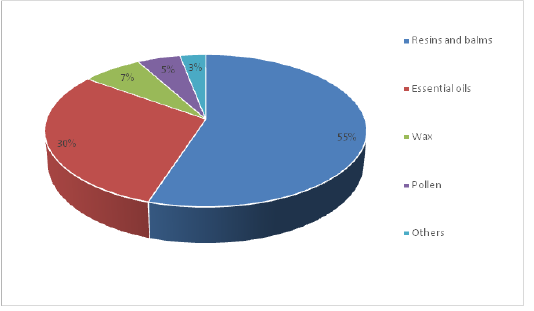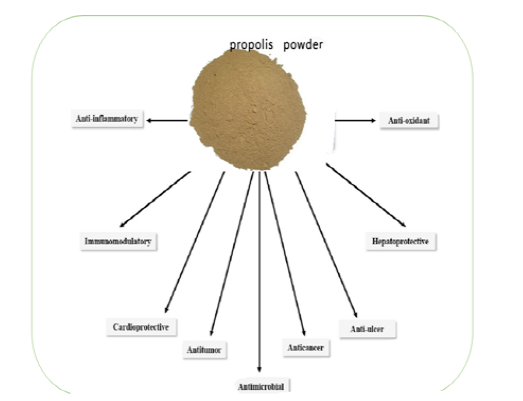Journal of Animal Health and Production
The composition of raw propolis.
Flow diagram presenting the pharmacological/ biological activities of propolis
Signal transduction pathways depicting the generation of ROS, activation of NF-kB, redox status and gene expression during oxidative stress, and propolis-mediated protective mechanism, glutathione peroxidase; glutathione reductase; NADPH oxidase; catalase; cytosolic, secretory phospholipase A2(sPLA2); phospholipase A2(cPLA2); lipoxygenase (LOX); superoxide dismutase (SOD); cyclooxygenase-2 (COX-2), Peroxy nitrite (OONO-); nitric oxide synthase (NOS); nitric oxide (NO); cytokines, TNF-α and IL-1ß; reduced oxidized glutathione (GSSG), glutathione (GSH) and hydrogen peroxide (H2O2), Nuclear factor-kB (NF-kB); and Nuclear factor-kB response element (NF-kB-RE). (Source: Farooqui and Farooqui. 2010).







